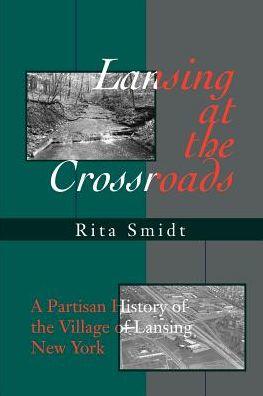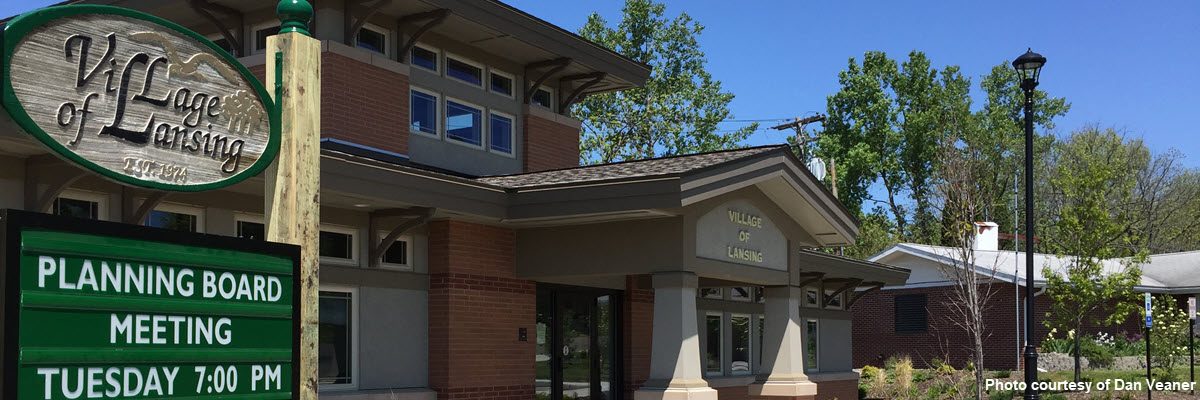Historical Perspective
The Village of Lansing is among the youngest Villages in New York. The Village was formed as a result of concerns from the residents in the southern portion of the Town of Lansing that was experiencing very rapid and extensive commercial development triggered by the construction of State Route 13. There was no zoning or land use planning in the Town of Lansing at the time and the Town government was actively promoting further commercial development. During 1973 and early 1974 residents organized a campaign to form the Village of Lansing. The referendum to form the Village was successful and the Village of Lansing was chartered by New York State in December 1974. The Town of Lansing Water District boundaries were used to form the Village of Lansing boundaries. The main reason the Village was formed was to control planning and zoning. The Village uses Zoning Law to manage commercial growth and commercial and residential development.
General Plan
In 1979, a General Plan was prepared by the Village Planning Board as a record of its studies and analyses of the resources and problems of this newly established Village. Groups of concerned citizens had already prepared and Village officials had adopted both Subdivision Regulations (1975) and a Zoning Law (1976). The General Plan presented goals and objectives for future development and identified special problem areas that the Village needed to deal with. Those areas dealt with issues in transportation, public utilities, parks and open space, police and fire protection, and medical services. The Plan was presented in broad terms to facilitate flexibility in meeting changing circumstances that could not be accurately forecasted.
The Plan served the needs of the Village very well and in 1995, the Planning Board reviewed it and brought it up to date.
Comprehensive Plan
In 1999, the Village adopted its first Comprehensive Plan, pursuant to the procedures and requirements set forth in NY Village Law Sec. 7-722. Although the Village had previously considered developing a separate comprehensive plan document rather than updating its General Plan, it had not done so because the existing General Plan had been sufficient. The changes to Section 7-772 made it mandatory that the Village produce a separate Comprehensive Plan document.
The development of the Comprehensive Plan started with a review of the existing General Plan. This was expanded by adding new sections on transportation, commercial and business development, community facilities, resources, and a village plan. A series of maps depicting natural resources, land use, recreation, transportation networks, and zoning were also added. Some sections of the General Plan were revised, updated, and included in the new plan, particularly population and housing. The preparation of the new plan was done initially by members of the Tompkins County Planning Department and reviewed and edited by the Village’s Planning Board and the Board of Trustees.
Since its creation, the Comprehensive Plan has been reviewed and updated twice – once in April 2005 and again in December 2015. The latest version of this plan can be found here: 2015 Comprehensive Plan.

Lansing at the Crossroads, the story of the creation of a new village in upstate New York to combat urban sprawl, is told by a key participant – Rita Smidt.
The construction of a new four-lane highway on the outskirts of Ithaca, NY created a rapidly growing commercial center in the previously rural town of Lansing. The clash between the newcomers and the old-timers over the direction and pace of this change led to the formation of a new local government and the incorporation of the Village of Lansing.
This is the story of that village, how and why it was formed, the problems it faced in its early years, and the victories its people won in gaining control of their own communal future. It is also a story that mirrors, on a small scale, significant national trends: urban sprawl, spreading suburbanization, the popular reaction against the disappearance of America’s open lands and the mounting costs of extending the urban infrastructure, and the turning away from centralization to local control as the preferred means of solving public problems.

